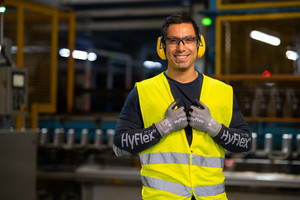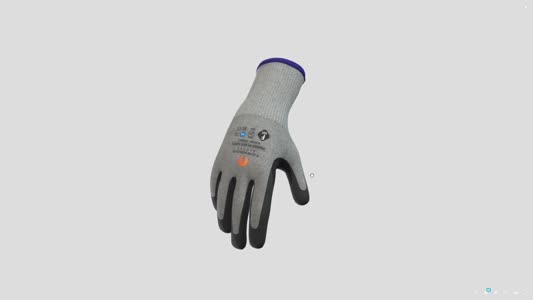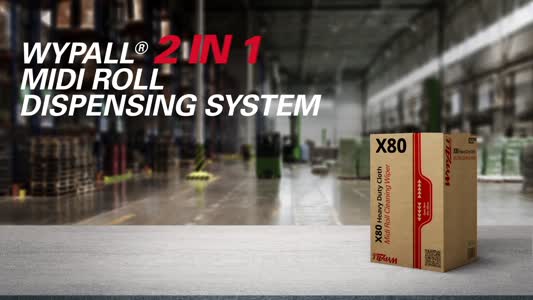
 |
Mark Sennett
Managing Editor |
 |
Kelly Rose
Editor |
Helping hands
30 September 2025
Hanneke Simons explores the new challenges in the selection of cut resistant hand protection.

JUST AS today’s workplaces look nothing like those of twenty years ago, personal protective equipment (PPE) is increasingly being developed to address the new challenges and safety risks that contemporary work environments present.
Focusing on the primary risk and failing to consider additional hazards or environmental circumstances is a common problem when selecting suitable PPE, particularly in industrial settings where multiple threats are present.
Thanks to improvements in design, material fabrication and production techniques, PPE products can now provide suitable defence against a range of seemingly unrelated hazards – particularly in the area of hand protection – providing a reliable and comfortable option that permits workers to safely carry out required duties.
Greater cut resistance
Exposure to sharp materials and subsequent cut risk is a common threat in most working environments. Even performing tasks considered relatively safe, like general warehouse duties or basic handling operations, can leave workers vulnerable to cut injury if suitable hand protection is not provided.
The 2016 revision of the EN 388 mechanical protection standard included labelling changes designed to facilitate easier selection of cut resistance gloves. It introduced the ISO 13997 test method, which determines the force (in Newtons) required for a blade to cut through the glove material. The test results are then categorised into 6 levels, based on an alphabetic cut resistance rating scale ranging from A to F, which assigns a protection level that spans minimal (A) through to extreme (F) risk. The new method provides a more reliable and accurate way to assess cut resistance, particularly for gloves designed to withstand higher levels of force and materials that can dull the blade. It also offers a more comprehensive assessment of cut resistance, allowing for better matching of glove protection to the specific hazards encountered in the workplace.
Given the wide-ranging exposure in many workplaces, it has become common to implement a policy of cut level C protection as a minimum. Level C can be appropriate for activities like body shop work (excluding welding), metal sheet handling, stamping, hardware assembly or raw materials handling.
Regardless of application, safety gloves must be comfortable and breathable, minimising the likelihood of removal. They must additionally offer the dexterity and grip needed to carry out duties as required. Fortunately, manufacturing and material advances have delivered specialised knitting technology that blends engineered, synthetic and natural fibres into high performance yarns. These are used to create gloves that combine high cut protection with exceptional comfort and dexterity, delivering the optimum solution in terms of both safety and wearability.
Touchscreen compatibility
The increased use of touchscreen technology has created a new safety challenge. Machine operators, maintenance workers and staff performing data input, stock receipts and materials ordering are now required to interact with smart phones, tablets and other touchscreen devices.
It is not practical – or advisable – to continually remove and re-don PPE to utilise touchscreens. This not only jeopardises safety, but also negates any efficiency gains delivered through use of the technology in the first place.
There are two common types of touch screen technology:
1. Resistive touch screens – typically found in industrial controls.
Comprising two transparent conductive-coated layers separated by a gap, resistive touch screens are activated by pressure – a finger press. Resistive technology can only handle one touch point at a time.
2. Capacitive touch screens – used in mobile devices including smart phones and tablets. Capacitive screens do not rely on finger pressure, working instead with anything that holds an electrical charge, including human skin. Capacitive screens incorporate sensors constructed from a range of materials including copper and indium tin oxide and store electrical charge in an electrostatic grid. Finger contact on the screen surface changes the electrical field and affects capacitance. The advantage over resistive technology is the ability to facilitate multi-touch gesture like two-finger zoom and swipe.
That said, most safety glove options will work with the resistive touch screens commonly found in industrial controls, provided they offer the appropriate flexibility and dexterity required to perform tasks.
When using capacitive touchscreens, workers need gloves that feature either a conductive coating or are constructed from fabric that incorporates conductive threads.
There tends to be confusion around suitable gloves for use with touch screens, including a misbelief that ESD or anti-static gloves are an appropriate choice. Gloves which have been tested in accordance with EN 16350:2014 can be used for electronic assembly work or where static charge is a concern, including where electrostatic discharge from a workers’ hands is likely to damage sensitive electronic components. They are not designed for use with today’s touch screen technology.
The optimal glove choice offers defence against other present hazards, including cut resistance, while still delivering adequate flexibility, dexterity and comfort to encourage all-day wear.
Skin health and comfort
Consideration of allergies, skin health and other comfort factors is a top priority when assessing glove solutions.
Workers are most likely to remove gloves that are uncomfortable or cause irritation, putting them at risk of injury. Certain glove materials have been found to cause issues for some wearers – in some cases due to latex or chemical allergies. Understanding the link enabled manufacturers to develop alternative options, leading to hand protection solutions designed to offer the protection and safety required while still addressing a range of allergy profiles.
That same focus on skin health and comfort continues to deliver new advances, including lightweight breathable designs that workers don’t want to take off. Gloves today are lighter and thinner, while offering three or four times the cut protection of previously available alternatives.
Hanneke Simons is regional category manager – mechanical protective solutions at Ansell. For more information, visit www.ansell.com
- Hand protection with hybrid technology
- Ultra-lightweight cut protection series
- The right gloves can protect against cut injuries
- Antimicrobial glove study
- Comfort & performance for sterile environments
- Barehand-like sensation
- Gripping stuff
- A perfect fit for Edd China’s Workshop Diaries
- No time to waste
- A sustainable world with safety at heart
























